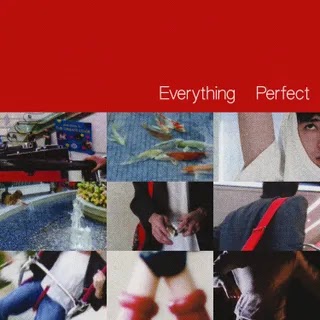Dave Grohl’s six-piece finds common cause between gaudy disco-pop and willfully absurd arena rock on an album-length collection of Bee Gees covers and live-in-studio Medicine at Midnight cuts.
In late February, less than two weeks after Foo Fighters released their 10th album in more than a quarter century as a band, the arena-rock placebo Medicine at Midnight (rumor has it Bill Gates put a chip in it!), they unceremoniously unveiled a disco alter ego. Billed, semi-funnily, as the Dee Gees, the Dave Grohl-led six-piece premiered their cover of “You Should Be Dancing” on BBC Radio 2. Grohl—ever the candid every-dude—said that the falsetto experiment was inspired by last December’s fascinating HBO documentary about the Bee Gees—never mind that he hadn’t actually seen it.
The stakes could hardly have been lower. The results were hard to fault. Recorded with one-man multi-platinum mint Greg Kurstin, the veteran band’s stab at the Bee Gees’ nuke-proof 1976 hit—the first in a run of disco-pop smashes that would appear on the next year’s gazillion-selling Saturday Night Fever soundtrack—is muscular but essentially faithful. When Grohl channels Barry Gibb’s horndog dancefloor exhortations (“My woman gives me pow-wah!”), it feels as self-consciously silly as disco’s monocultural phase gave audiences a license to be, from Studio 54 to suburban strip malls. Thoroughly harmless, it’s kind of a hoot. It would’ve made a fine novelty single.
Hope you’re ready to boogie down: “You Should Be Dancing” is merely the opening track on an entire album attributed to the Dee Gees, a Record Store Day exclusive titled, semi-funnily, Hail Satin. The rest of side one is devoted to loud but loving covers of four other numbers from the Gibb brothers’ massive songbook. The five tracks on side two are straightforward live-in-studio renditions of Medicine at Midnight cuts. Yes, this seems superfluous: How many Bee Gees covers by Foo Fighters does the world need? Yes, it’s also conceptually muddled: What do live versions of new Foo Fighters songs have to do with Bee Gees covers or wide-lapeled leisure suits? But it’s hard to get too worked up about all this when nobody else seems to be. Take a chill pill, Disco Stu.
Give Foo Fighters credit for their Bee Gees song selection. They don’t rehash “Stayin’ Alive.” They know their lane, and they steer clear of the British-Australian trio’s 1960s country-soul or ’80s adult-contemporary balladry. They home in on that whirlwind period when the Bee Gees were, by a good distance, the biggest act in the world—the Beatles after the Beatles, the Kings of Pop before the King of Pop. The trouble is, this is familiar territory, dated since the early days of the Walkman, so without at least some level of reinterpretation or examination, Hail Satin risks becoming little more than the tightest ever live-band karaoke.
Probably the best argument for expanding the Dee Gees project beyond an individual song is Foo Fighters’ punchy take on “Shadow Dancing,” a weirdly haunting 1978 chart-topper—it was pivotal to Marlon James’ Booker Prize-winning novel A Brief History of Seven Killings—that was actually recorded by Andy Gibb, younger brother of the three original Bee Gees, in collaboration with his siblings. Drummer Taylor Hawkins gamely sings lead on this, a fitting choice, and the backing vocalists playfully fill in for the horn and string sections. “Shadow Dancing” must have been inescapable when all things Bee Gees-involved ruled the radio, but Foo Fighters help make fresh sense of it here.
Beyond that, if you’ve heard one eminently competent Foo Fighters cover of a hugely successful disco song, perhaps you’ve heard them all. When they charge back into two more Saturday Night Fever staples (the chicken-scratch funk of “Night Fever,” the twinkling sentimentality of “More Than a Woman”), it’s like they’re repeating the same joke with slightly different inflections, wondering if this time they’ll elicit a laugh. The frenzied gallop of “Tragedy,” a successive 1979 chart-topper, helps illustrate how small of a leap it was to synth-metal like Europe’s “The Final Countdown,” but it also betrays the limits of the Dee Gees’ fidelity to their source material (the original’s signature “explosion” sound effect is nowhere to be found). So much of the Bee Gees’ appeal lay in their brotherly harmonies, their vast production resources, and their particular historical moment, none of which can be fully recreated here, no matter the band’s enthusiasm.
Although Grohl trumpeted Medicine at Midnight as Foo Fighters’ equivalent to Bowie’s Let’s Dance, you had to squint to discern much extra degree of disco-tude. The musical whiplash on side two of Hail Satin is like going from watching John Travolta do the hustle in white polyester to watching him mispronounce the name of Idina Menzel at the Oscars. “Making a Fire” and “Shame Shame” both have a certain strut, but not like that, and the juxtaposition with such universally enjoyed songs as the Bee Gees’ greatest hits would do no band’s new music any favors.
The buttons really go back over the chest hairs on “Waiting on a War,” a Medicine at Midnight highlight that ramps up from winsome power-pop strums to blazing hard-rock barrage seemingly just to show Foo Fighters can pull it off (or to jolt awake the cheap seats). From there, all obvious disco-band pretenses are put back on mothballs. On “No Son of Mine,” Grohl bites off syllables like James Hetfield clamoring for “Fuel.” On “Cloudspotter,” he spits his big dumb rock lyrics (“Refuse me while I kiss the sky”) with so much hammy fervor that you want to buy him a $16 draft beer. Even without the roar of a Madison Square Garden crowd, the live-in-studio feeling helps remind you that he doesn’t just know how ridiculous this is—he’s reveling in it.
If Grohl has gotten around to watching The Bee Gees: How Can You Mend a Broken Heart, the unfailingly likable musician surely has some sharp things to say about it. The Gibb brothers—Barry, as well as the late Robin, Maurice, and teen idol Andy—were the mainstream face of disco during the years revisited by this album, much as the three Nirvana members embodied grunge for a pop audience more than a decade later; the Miami Sound presaged Seattle’s sound. Grohl also recently went viral by telling Pharrell that his drums on Nevermind were “disco beats, dude,” raising tantalizing questions about the blurred lines (ugh, sorry) between genres, the delicate and sociologically fraught interplay between culture and craft. And Hail Satin tacitly represents a growing awareness, even among the “Led Zeppelin didn’t write tunes everybody liked, they left that to the Bee Gees” generation, that much of the disco backlash was rooted in racism and homophobia.
Hail Satin is too inconsequential to support serious arguments. And this isn’t a speech out of The Last Days of Disco. But more than anything, the Dee Gees record suggests that disco-pop and arena rock are united less by their drum beats than by their shared embrace of the gaudy and willfully absurd. They’re welcoming spaces for people who maybe wouldn’t ordinarily line-dance or flash metal horns to act knowingly goofy, to join in on a communal gag. For all the deserved cachet accrued over the past couple of decades around scenes like the Loft and Paradise Garage or unsung auteurs like Arthur Russell, it’s about time that the Bee Gees are getting their reappraisal as well. Disco lovers in 2021 don’t have to worry about losing their edge. They should be dancing, yeah.






%20Music%20Album%20Reviews.webp)









0 comments:
Post a Comment